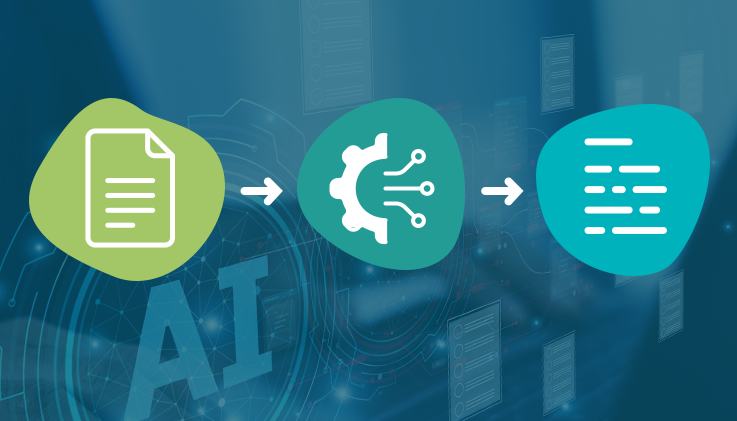In this insightful blog, we will delve into the world of AI chatbots, a powerful wing of conversational AI, that has fundamentally changed how we interact in this digital era. We will explore the impact of live chats backed by conversational AI bots and explore how they enhance customer experiences.
What is a chatbot and an AI bot?
A chatbot is a computer program that can talk and chat to people, just like humans are able to chat with one another. They work by reading what you type and then giving smart responses. A chatbot's capabilities bridge human limitations to provide 24/7 customer service and form the first line of support for brands—a valuable tool for improving customer experience (CX) and operational efficiency.
There has been a common confusion among people about chatbot and conversational AI. For them, a chatbot is a program designed to carry on basic, rule-based conversations. But when you implement conversational AI in a chatbot, it becomes a more advanced system that uses machine learning (ML) and natural language processing (NLP) to understand, learn from, and engage in more complex conversations. A combination of automation technology and artificial intelligence (AI) enables chatbots to provide more accurate and human-like interactions in the absence of human agents.
Also read: Conversational AI Bots Offering Infinite Solutions (Gen-AI Innovation)
Explore what you can do with an AI chatbot
With an AI chatbot, you can maintain low response times with users. That means faster and more efficient communication! Service representatives and customers can easily share their screen, screenshots, images, supporting documents, and website links to provide clearer context of their issues to facilitate troubleshooting. Simply put, during ongoing chat sessions, users can undertake the following actions.
- Chat with multiple visitors simultaneously
- Conference chat with a visitor and another user
- Group chat with other users
- Transfer chat to another user
- Create a case from chat
- Send out chat transcripts during or after a chat conversation
Customers do not have to stay tied to their devices and can multitask while seeking support through the chat channel. You can choose from text chat, audio chat, or video chat, depending on how you want to seek support.
Interesting aspects of ThinkOwl’s AI chatbot
ThinkOwl's AI bot has quite a few interesting capabilities that make conversations intuitive and seamless besides amplifying the user’s quality of experience. Let us look at them one by one.
- Automatic invitations: To engage users, especially visitors on your website, the AI chatbot can start with interesting phrases to initiate conversation. These phrases can appear as pop-ups on your website. With the automatic invitations functionality that enables the chat invitation pop-up, you can rest assured no visitor gets missed, thereby vastly improving your brand’s customer-centric image.
- Chat triggers: Chat triggers ensure no visitor leaves your brand’s touchpoint unattended. The chat triggers interactive messages to initiate conversations with users, depending on the webpages they visit and spend most of their time on.
- Chat routing: Merely facilitating communication does not make the AI chatbot a trusted business resource. What sets it apart is its chat routing functionality that decides how incoming visitor chat requests are routed and distributed among other agents. Chats can be routed to an available agent, which means a visitor's chat request is never ignored. Chat requests are presented to the next available agent when the previously available agent either did not accept the request on time or rejected the request.
There is another way AI bots work, where the chat requests are made available to all available agents at once. This implies that visitor chats get routed to all the available agents simultaneously, allowing them to accept a query they wish to handle. - Creating cases from chat interactions: AI chatbot enables seamless communication by creating cases from customer interactions, automatically capturing issue-relevant information, and raising tickets depending on the severity of the situation.
- Collecting feedback: The chatbot helps you collect customer feedback based on their experience. It sends out emails to visitors to collect ratings or ask the visitors to leave feedback on the post-chat form, enabling you to periodically listen to your customer’s voice.
- Internal chatting: Your ThinkOwl chat channel allows users to communicate freely with one another. This enables support agents to pass on important information, discuss any customer issue, ask for help from another support agent, etc. Users may set up a group call within the chat tool if they require it. Pretty versatile. Isn’t it?
Also read: Maximize Service Agents' Efficiency With Intelligent Suggestions
Impact of conversational AI integrated into the chat channel
Conversational AI bots are today used by various industries and are mainly deployed in customer service functions. Powered by NLP and ML enhancements, conversation bots can understand user intent and customer sentiment, provide information, execute tasks, and even engage in casual conversation. When integrated into your chat channel, these bots simulate human conversation and respond to text or voice inputs with contextually relevant and coherent answers.
Conversation bots integrated within your chat channel can sense customer sentiment and allow instant handover to human agents when necessary. This ensures that experienced service reps handle complex issues or sensitive matters, providing a seamless customer experience. However, there is one condition that needs to be fulfilled. The efficiency of your conversation bot is only guaranteed when you train it with your process data.
The AI learns the ropes of doing work from your agents. It observes cases and learns how a particular case has been resolved. Over time, the AI keeps learning the process thoroughly to guide agents when they face any difficulty. The chatbot gets a leg up with AI and assumes a conversational role, thus becoming capable of holding meaningful conversations.
Various perspectives on using AI Chatbot
From your customer's point of view, you should ensure your AI chatbot is accessible to them across various platforms like websites, mobile applications, or social media platforms. You need to set up the chat channel in such a way so that when a customer has a query, they interact with the AI bot first. If the AI bot is unable to resolve a customer query, or depending on the gravity of the issue, a customer might connect with a specific agent or get assigned to the first available agent. Interestingly enough, this decision will be made by AI, making your channel more intelligent as they assess the level of customers' issues.
From an agent’s point of view, your AI chatbot can monitor incoming chat requests from customers. Additionally, the AI in your chat support can prioritize them based on urgency, type of issue, or complexity. Now, your chat channel serves a dual role. On one hand, it can accept customer chats/issues of lesser intensity and divert complex cases to agents based on their experience or availability. And on the other, the chat channel serves as a documentation system where transcripts are automatically saved and recorded so that the conversation can be referred to in the future. In addition to saving transcripts, the chatbot allows you to send the chat transcripts to customers at the end of the chat session.
Also read: Navigating The AI Landscape: General AI And Generative AI
Some interesting FAQs on AI chatbots
- What type of AI chatbot is best for a business?
The best AI chatbot is the one that understands your needs and responds quickly, ensuring natural, human-like conversations. It should be able to handle many different types of questions and provide helpful answers. - How to build chatbots?
To build a chatbot, you will need to start by choosing a tool that lets you develop one. You will need to define what tasks you want the chatbot to help you with and then create responses for them to have conversations. Some tools let you design chatbots without coding, like ThinkOwl, while others require programming skills. - How do chatbots work?
Chatbots work by using AI and NLP to understand what you say, and then they give a suitable response. They "read" or "listen" to your words, analyze them, and look for patterns. Based on this, they choose the most appropriate reply. AI chatbots also learn from past conversations to improve the responses over time.
To conclude, your chat channel is a customer support medium that offers the perfect balance between live agent and tech support. AI chatbots can guide customers through service tasks in a conversational form and are programmed to serve customer around the clock. Your agents’ productivity skyrockets as they are relieved from attending to every incoming customer query and only focus on urgent or high-priority tickets. To explore the benefits of ThinkOwl’s AI chatbot and its capabilities, sign up for a 30-day free trial.












